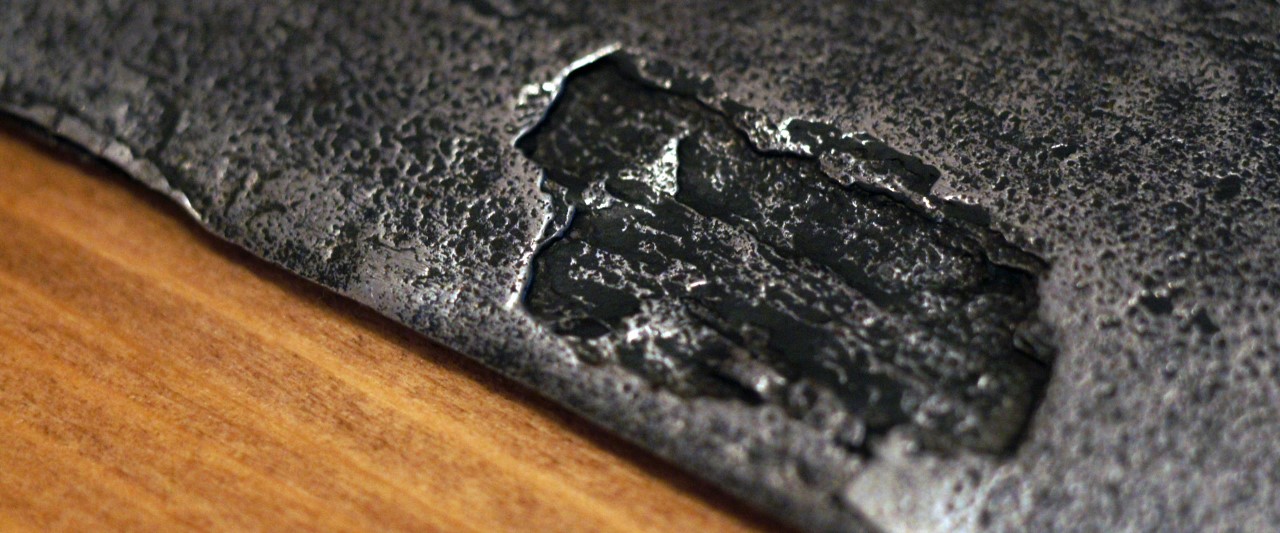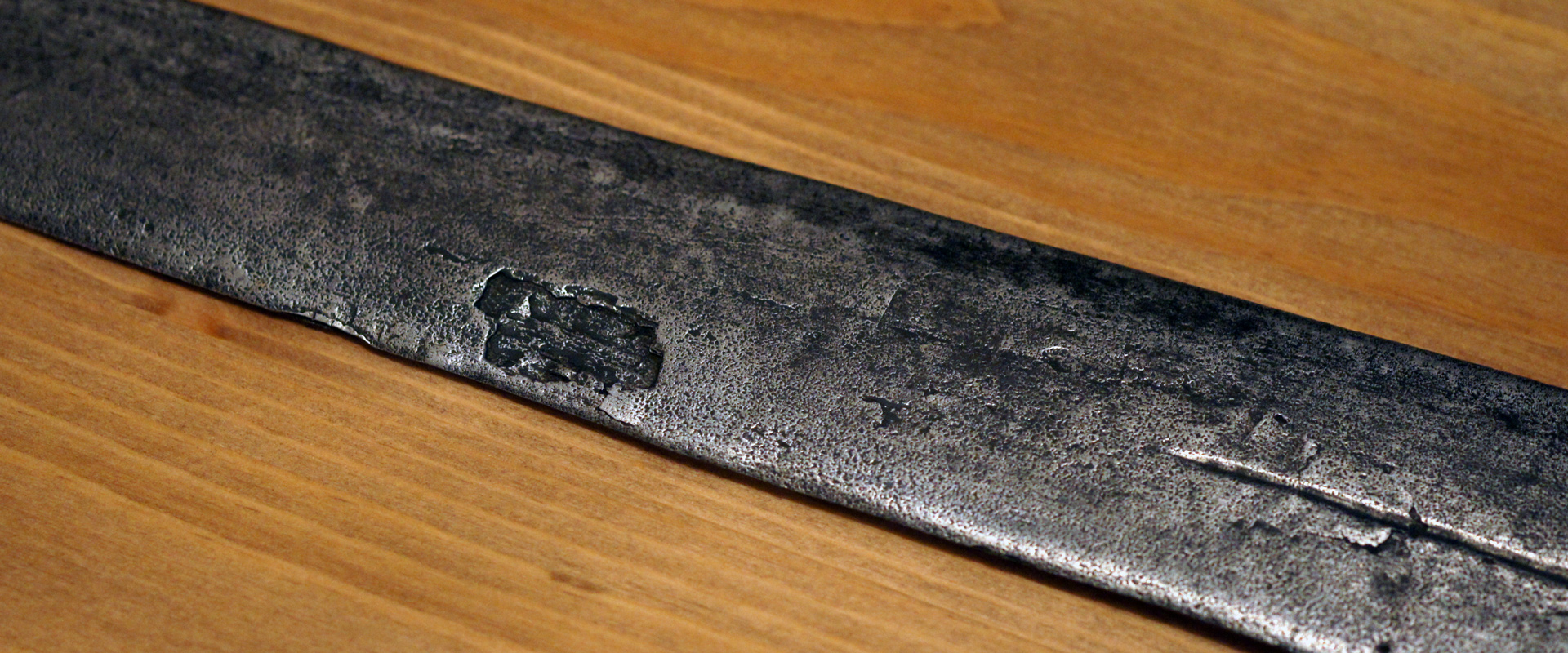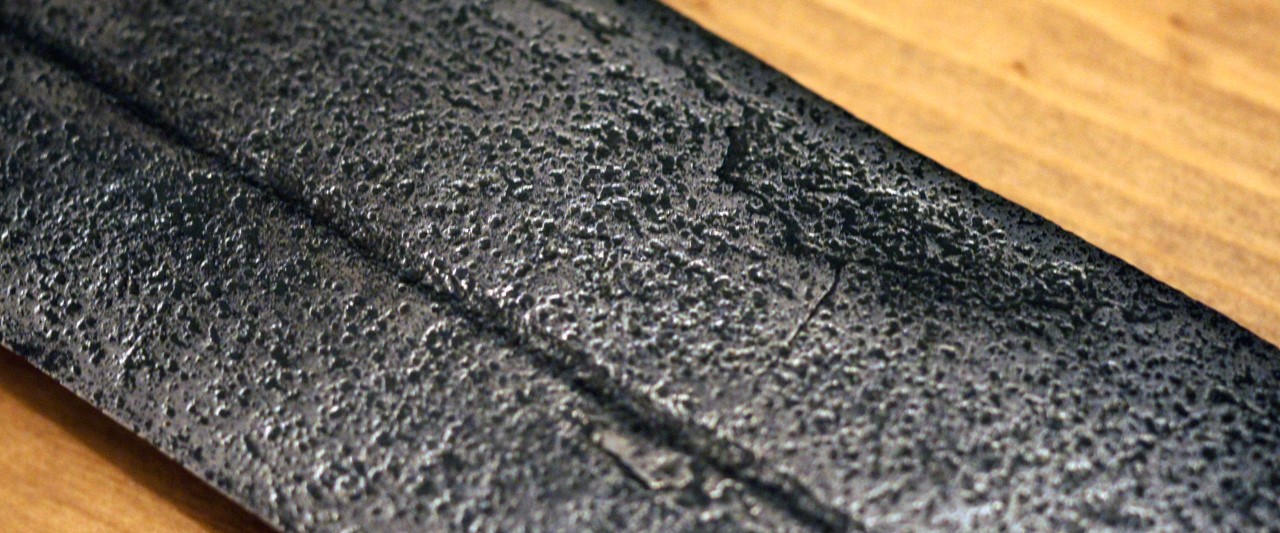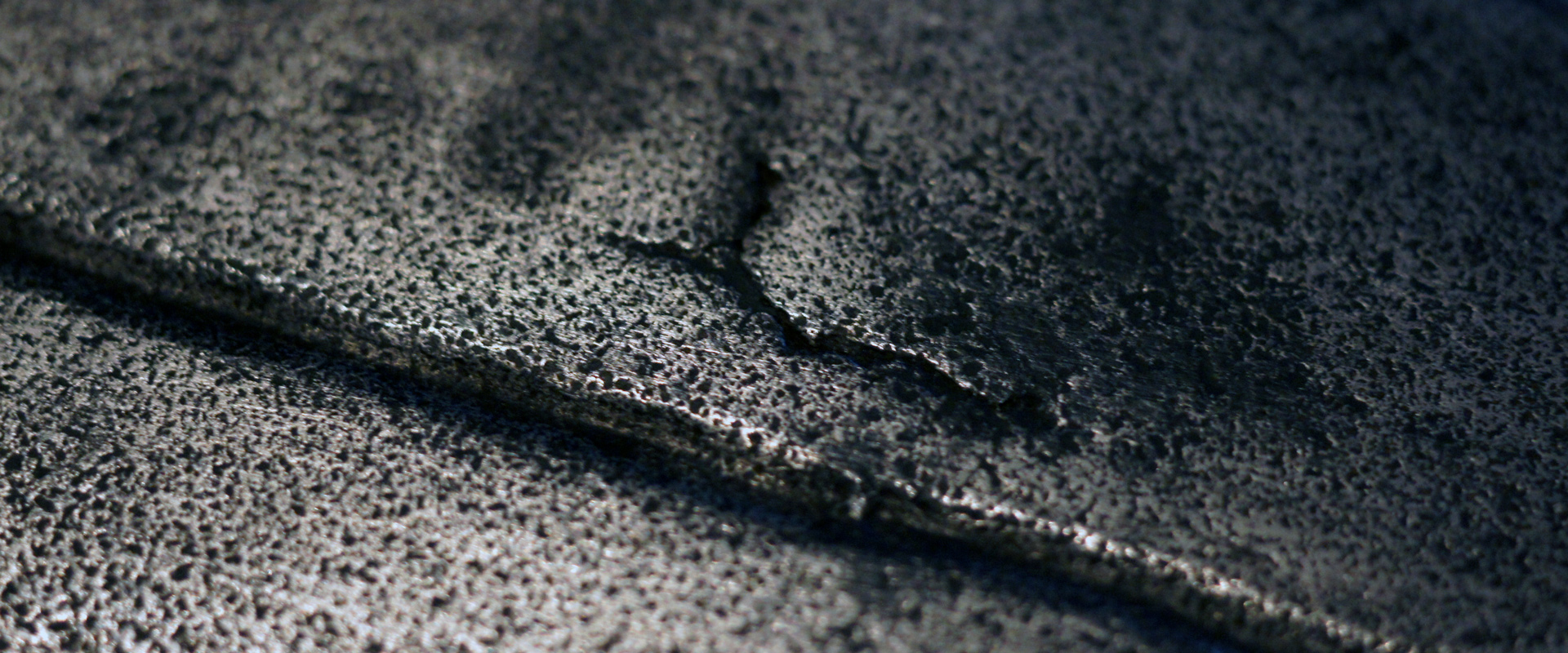
Inside the Steel
October 8, 2023 African Arms
The steel, at the heart of any sword, is often an enigma. Hidden by patina and age, the texture and properties of an antique sword are often not readily apparent. But occasionally an extant example will exhibit damage or flaws that reveals something of the inner character. This is one such example.
While an exact dating is not viable at this time, it is certainly an 'older' sword. The blade is worn, the pommel is large and globular.
Critically the blade shows a forging flaw, which over time exhibited a section of the inner core of the blade. This is particularly interesting, because for most collectors a blade reveals on its surface. Without taking physical samples for lab analysis a private collector rarely has a good sense of the characteristics of a sword blade beyond what physical details can be ascertained from the surface and the general properties it exhibits such as flex.
So for me, this particular sword, with its rather obvious flaw, is one of the most interesting swords I own. It is almost certainly of entirely native manufacture, including the iron ore used to forge it.

The blade has a single, somewhat wavy fuller and reasonable thickness and flex. The edge is very keen and does not show the usual marks of rough sharpening.
The main 'window' into the sword is a large section of the outer layer of steel which has worn or dropped away.

The sword has an outer layer, which jackets the inside of the blade. I am not enough of a metallurgist or smith to infer precisely what this means, but certainly there appears to be multiple layers of material.
The rest of the blade shows lamination consistent with this.

Both cracks near the fuller and lamination lines at the edge of the blade. This is perhaps also indicative of slag being present in the blade. The surface is pockmarked from age.

This blade has all the hallmarks of a very old sword. The pommel in particular is quite interesting. It features some more recent repairs in the form of solder. But the main structure of the pommel seems to be of the same age as the blade. The grip is much more recent, a simple affair of bronze sheet and leather strapping.

The medial ridge shows faintly the original geometric line decoration, now worn almost smooth through use. This is a testament to the many hands that have held this sword, slowly with the passage of time creating this aged surface.

Oddly enough this is one of the cheapest takouba I have ever acquired. It came out of Germany from an online auction. As I recall I was the only bidder. The humble and rough appear obviously put most people off. I have had this sword for years, but it still remains one of my favorites. An old warrior with a little window into its steel heart.